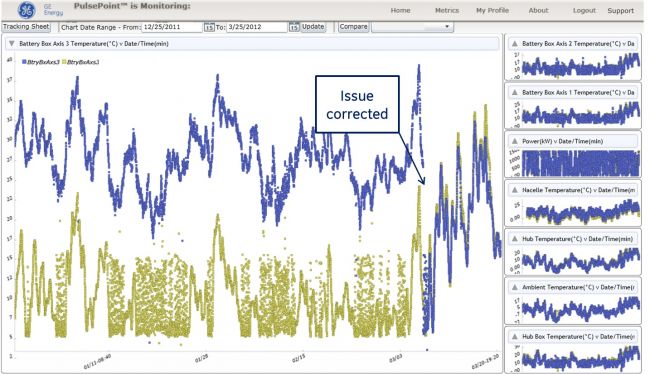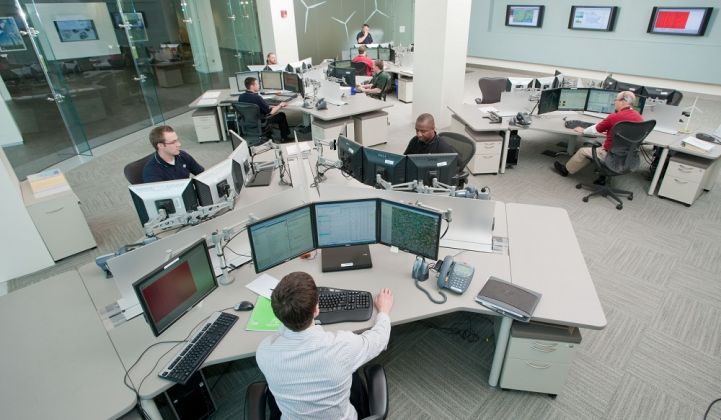In upstate New York, a staff of 30 technicians is monitoring 6,000 wind turbines around the globe 24 hours a day. This is GE’s Remote Operations Center (ROC). There's another ROC in Salzbergen, Germany. Between the two ROCs, GE monitors more than 6,000 turbines and keeps the GE wind machine fleet at a claimed 98 percent availability.
I spoke with newly promoted Andy Holt, the General Manager of Renewable Energy Services at General Electric (NYSE: GE) Energy last week about this convergence of IT and energy technology.
GE has built about 50 percent of the wind turbines in the U.S. and uses IT to maximize turbine efficiency and improve the cost and reliability of wind power.
Technicians in the ROC monitor the turbine fleet for faults or failures while an additional team of engineers uses a software and communications package that identifies anomalies in a turbine’s operation with the goal of detecting and correcting issues before they turn into a failure. Technicians on the ground at a wind farm are alerted by the remote monitoring teams and can make adjustments to the turbines before a failure occurs or immediately afterwards. Holt was struck by the staff of the ROC as "unsung heroes" that are "always there" and "don't get a lot of recognition."
GE claims that most turbine faults it spots are resolved in less than ten minutes. Holt said the wind turbine monitoring used here is similar to what GE does at its sister businesses in gas engines, steam turbines, and jet engines. "Our system gathers gigabytes of data -- the secret sauce is turning that into information," said Holt.
Typical wind turbine warranties are two years, followed by a service contract modeled on an operating life of 20 years.
GE’s diagnostic software identifies issues at wind farms thousands of miles away down to specific turbines and very specific faults. GE claims its remote capabilities can add $15,000 to $20,000 per wind turbine, per year, to a customer’s bottom line by identifying under-producing wind turbines. GE cites an example where one turbine out of 200 at a wind farm in Illinois was underperforming. When technicians checked the turbine’s settings, they determined that the angle of the three wind blades were off by about 15 degrees and rectified the misalignment.
GE Energy -- made up of GE Power & Water, GE Energy Management and GE Oil & Gas -- employs more than 100,000 people globally and had 2010 revenues of $38 billion.
Holt acknowledges there is some uncertainty in the 2013 wind market because of the loss of the Production Tax Credit (PTC). But, he added, "We know for sure there are 60 gigawatts of wind installed in the U.S. and the turbine doesn't know if the PTC is on or off. We need to run the machines like we own them."
Here's a screenshot of PulsePOINT software that shows information on the temperature of the battery boxes in two different wind turbines on a wind farm. The blue line shows a turbine running at a significantly higher temperature than another turbine in the fleet, as well as the data after the issue was corrected by a field technician.




